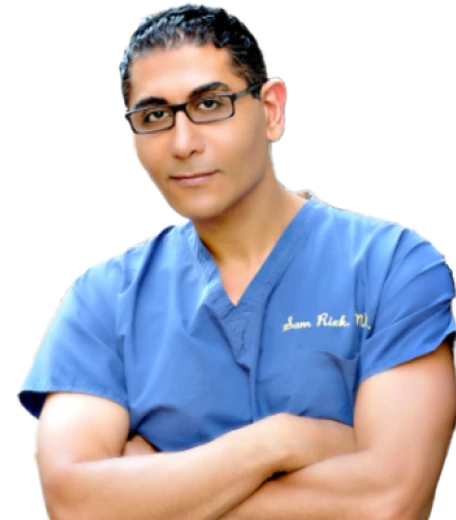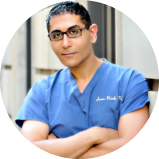A facelift is a significant investment in yourself, a decision that can restore a more youthful and refreshed appearance. But one of the most pressing questions potential patients have is: “How long does a facelift last?” It’s a crucial factor in the decision-making process, and understanding the longevity of your results is key to setting realistic expectations and feeling confident in your choice.
What “Lasting Results” Really Means
It’s important to understand that a facelift doesn’t stop the natural aging process. Instead, it “resets the clock.” You will continue to age, but from a more youthful starting point. So, while the results of a facelift are not permanent, they are long-lasting. Even a decade after your procedure, you will likely look significantly younger than you would have without the surgery.
The goal of a facelift is not to make you look like a different person, but rather a refreshed and revitalized version of yourself. The longevity of these results is about maintaining that refreshed look for as long as possible.
Average Lifespan of a Facelift: What Studies Show
The longevity of a facelift isn’t one-size-fits-all; it significantly depends on the surgical technique used. For those with early signs of aging, a mini facelift offers subtle rejuvenation, with results typically lasting between 5 to 10 years due to its less invasive nature. A traditional (SMAS) facelift provides more comprehensive results by tightening the underlying muscle structure, offering a lifespan of around 10 to 12 years.
For the most durable and significant rejuvenation, the deep plane facelift stands out. This advanced technique repositions deeper facial tissues and muscles as a single unit, creating a more natural and robust lift. Because it addresses the structural elements of aging, studies and clinical experience show that deep plane facelift results can last for 10 to 15 years, and often longer.
How Age Affects Facelift Longevity
Chronologic age offers only a broad guideline for facelift durability. Tissue biology, especially the condition of skin, subcutaneous fat, and fascial support, ultimately dictates how long surgical corrections persist.
- 40s–Early 50s: Better skin elasticity and thicker dermis allow tissues to hold their new position longer, commonly 10–15 years before a touch-up is considered.
- Mid 50s–70: Reduced collagen, sun damage, and bone thinning shorten the arc to 7–10 years.
- 70s and beyond: A facelift is still effective, but expectations shift to softer, subtler improvements over 5–7 years.
Skin condition matters more than birthdays. Smoking, excessive sun, poor nutrition, and chronic sleep loss erode collagen and blood flow, so laxity returns sooner. Conversely, a commitment to sun protection, a nutrient-rich diet, and a consistent skincare routine preserves skin integrity, effectively extending the beautiful outcome of your facelift for several additional years.
Other Key Factors That Influence How Long Does a Facelift Lasts
How long do facelifts last hinges on more than calendar age. The baseline health of your skin sets durability limits; collagen-rich, well-protected tissue keeps results crisp, while sun-damaged or smoker’s skin relaxes sooner. Equally critical are the depth and vector of the surgical technique, everyday lifestyle choices such as weight stability and UV exposure, and disciplined post-surgical maintenance
Surgical Technique
A surgeon who specializes in facial plastic surgery and has a deep understanding of facial anatomy will be able to achieve more natural and longer-lasting results. Dr. Sam Rizk, a double board-certified facial plastic surgeon, is known for his 3D endoscopic guidance that provides millimetre precision and minimal trauma, making him NYC’s go-to facelift surgeon.
Skin Quality and Genetics
The quality of your skin is a significant factor. If your skin is healthy and has good elasticity, you’re likely to enjoy your facelift results for a longer period. Genetics also play a role in how your skin ages.
Lifestyle Choices
Your lifestyle choices can have a major impact on the longevity of your facelift. Sun exposure is one of the biggest culprits in skin aging. Protecting your skin from the sun with a high-SPF sunscreen is crucial. Smoking also has a detrimental effect on skin health, as it can damage collagen and elastin, leading to premature aging. Maintaining a stable weight is also important, as significant weight fluctuations can stretch the skin and affect your facelift results.
Post-Surgical Maintenance
Long-term success relies on disciplined upkeep. Dr. Rizk’s structured aftercare, scheduled visits, lymphatic massage, and customized home protocols keep you on track, so your facelift maintains refined contours for many more years.
When and Why Touch-Ups or Revisions Happen
Even with the best surgical technique and a healthy lifestyle, the aging process will continue. Over time, you may notice some recurrence of sagging skin or jowls. This is normal and doesn’t mean your facelift has “failed.” Many patients choose to have a secondary, or revision facelift 10 to 15 years after their initial procedure to maintain their results.
Common scenarios to keep in mind after a facelift:
- Gravity returns, mid-face soft tissue slides again in 8–12 years post-op.
- Neck skin redundancy. Platysmal bands reappear sooner in men due to heavier tissue.
- Weight change or illness. Rapid fat loss unbalances facial proportions.
- Technique limitations. Skin-only or mini-lifts may require earlier revision (approx every 5 years).
Why See Dr. Rizk
Dr. Sam Rizk is an internationally recognized facelift authority whose meticulous deep-plane and high-SMAS techniques have delivered thousands of natural-looking results with under a 1% complication rate. He regularly lectures at global plastic-surgery congresses, teaching colleagues how to combine anatomical precision, safety protocols, and advanced imaging to achieve durable rejuvenation for diverse patient profiles across five continents annually and virtually.
- Unmatched Expertise: Double board-certified in facial plastic and reconstructive surgery with over 25 years of specialized experience.
- Highest Safety Standards: Procedures are performed in his private, state-of-the-art, AAAASF accredited surgical facility.
- Advanced Technology: Utilizes sophisticated 3D high-definition endoscopic technology for unparalleled precision and natural-looking facelift results.














